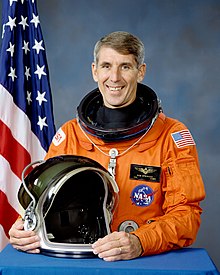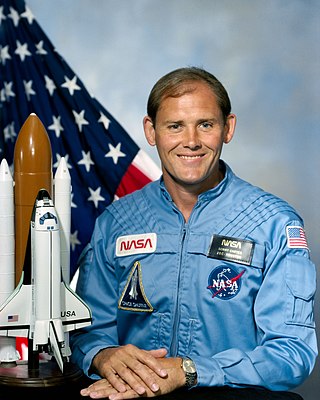
Manley Lanier "Sonny" Carter Jr., M.D., , was an American chemist, physician, professional soccer player, naval officer and aviator, test pilot, and NASA astronaut who flew on STS-33.

Michael John Smith, was an American engineer and astronaut. He served as the pilot of the Space Shuttle Challenger when it was destroyed during the STS-51-L mission, breaking up 73 seconds into the flight, and at an altitude of 48,000 feet (14.6 km), killing all seven crew members. Smith's voice was the last one heard on the Challenger voice recorder.

Terrence Wade Wilcutt is a United States Marine Corps officer and a former NASA astronaut. He is a veteran of four Space Shuttle missions. Wilcutt was NASA's Chief of Safety and Mission Assurance, until his retirement from NASA in December 2020.

Michael Lloyd Coats is a former NASA astronaut, raised in Riverside, California. From December 2005 to December 2012, he served as Director of the Johnson Space Center in Houston, Texas.
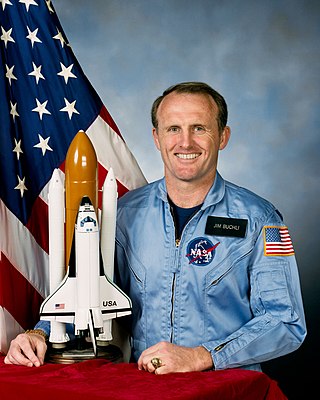
James Frederick Buchli is a retired United States Marine aviator and former NASA astronaut who flew on four Space Shuttle missions.
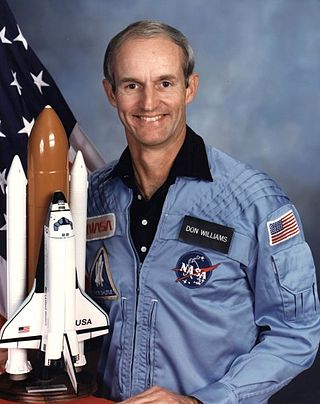
Donald Edward Williams was an American naval officer and aviator, test pilot, mechanical engineer and NASA astronaut. He logged a total of 287 hours and 35 minutes in space.

Robert Franklyn "Bob" Overmyer was an American test pilot, naval aviator, aeronautical engineer, physicist, United States Marine Corps officer, and USAF/NASA astronaut. Overmyer was selected by the Air Force as an astronaut for its Manned Orbiting Laboratory in 1966. Upon cancellation of the program in 1969, he became a NASA astronaut and served support crew duties for the Apollo program, Skylab program, and Apollo-Soyuz Test Project. In 1976, he was assigned to the Space Shuttle program and flew as pilot on STS-5 in 1982 and as commander on STS-51-B in 1985. He was selected as a lead investigator into the Space Shuttle Challenger disaster in 1986, retiring from NASA that same year. A decade later, Overmyer died while testing the Cirrus VK-30 homebuilt aircraft.

Norman Earl Thagard, is an American scientist and former U.S. Marine Corps officer and naval aviator and NASA astronaut. He is the first American to ride to space on board a Russian vehicle, and can be considered the first American cosmonaut. He did this on March 14, 1995, in the Soyuz TM-21 spacecraft for the Russian Mir-18 mission.

Daniel Charles Brandenstein is the Executive Vice President and Chief Operating Officer of United Space Alliance. He is a former Naval Aviator, test pilot and NASA astronaut, who flew four Space Shuttle missions. He also served as Chief of the Astronaut Office from 1987 to 1992.

Andrew Michael "Andy" Allen is a retired American astronaut. A former Marine aviator and lieutenant colonel, he worked as a test pilot before joining NASA in 1987. He flew three Space Shuttle missions before retiring in 1997.

Robert Donald Cabana is a former Associate Administrator of the National Aeronautics and Space Administration (NASA), NASA astronaut and non-flight-eligible management astronaut), and is a veteran of four Space Shuttle flights. He served as Chief of the Astronaut Office from 1994 to 1997 and as director of the John F. Kennedy Space Center from 2008 to 2021. He is also a former naval flight officer and naval aviator in the United States Marine Corps.

John Oliver Creighton, , is a former NASA astronaut who flew three Space Shuttle missions.

Kathryn Patricia "Kay" Hire is a former NASA astronaut and Captain in the U.S. Navy Reserve who has flown aboard two Space Shuttle missions.

Charles Owen Hobaugh is a former NASA astronaut and a retired U.S. Marine Corps officer. He has had three spaceflights, all of which were Space Shuttle missions to the International Space Station, lasting between 10 and 13 days.

Carlos Ismael Noriega is a Peruvian-American NASA employee, a former NASA astronaut and a retired U.S. Marine Corps lieutenant colonel.

Frederick Wilford "Rick" Sturckow is an engineer, retired United States Marine Corps officer, former NASA astronaut, and commercial spacecraft pilot. Sturckow is a veteran of four Space Shuttle missions. He flew as a pilot on STS-88 and STS-105 and as a commander on STS-117 and STS-128. All four missions docked with the International Space Station, making Sturckow one of three American astronauts to visit the station four times. Sturckow later was assigned to the Johnson Space Center as a CAPCOM. He left NASA in 2013 to become a pilot for Virgin Galactic.
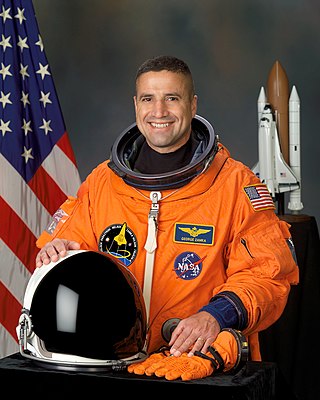
George David "Zambo" Zamka is a former NASA astronaut and United States Marine Corps pilot with over 3500 flight hours in more than 30 different aircraft. Zamka piloted the Space Shuttle Discovery in its October 2007 mission to the International Space Station and served as the commander of mission STS-130 in February 2010.

Christopher Joseph "Gus" Loria is a retired United States Marine Corps Colonel and a medically retired NASA astronaut. He was originally scheduled to fly on STS-113 as pilot; however, he was grounded from spaceflight due to a severe back injury.
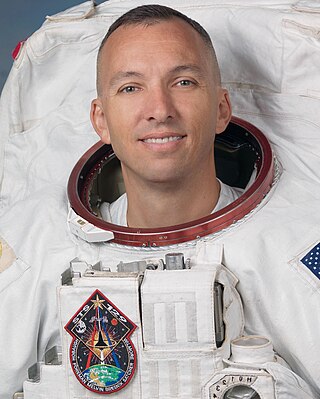
Randolph James "Komrade" Bresnik is a retired officer in the United States Marine Corps and an active NASA astronaut. A Marine Aviator by trade, Bresnik was selected as a member of NASA Astronaut Group 19 in May 2004. He first launched to space on STS-129, then served as flight engineer for Expedition 52, and as ISS commander for Expedition 53.

Douglas Gerald Hurley is an American engineer, former Marine Corps pilot and former NASA astronaut. He piloted Space Shuttle missions STS-127 and STS-135, the final flight of the Space Shuttle program. He launched into space for the third time as commander of Crew Dragon Demo-2, the first crewed spaceflight from American soil since STS-135 and became, together with Bob Behnken, the first astronaut in history launching aboard a commercial orbital spacecraft. He was also the first Marine to fly the F/A-18 E/F Super Hornet. His call sign is "Chunky", and he was sometimes referred to by this name on the communication loops.
